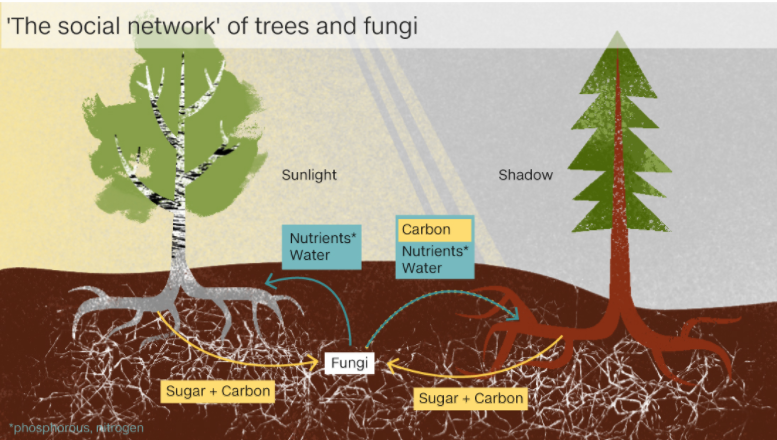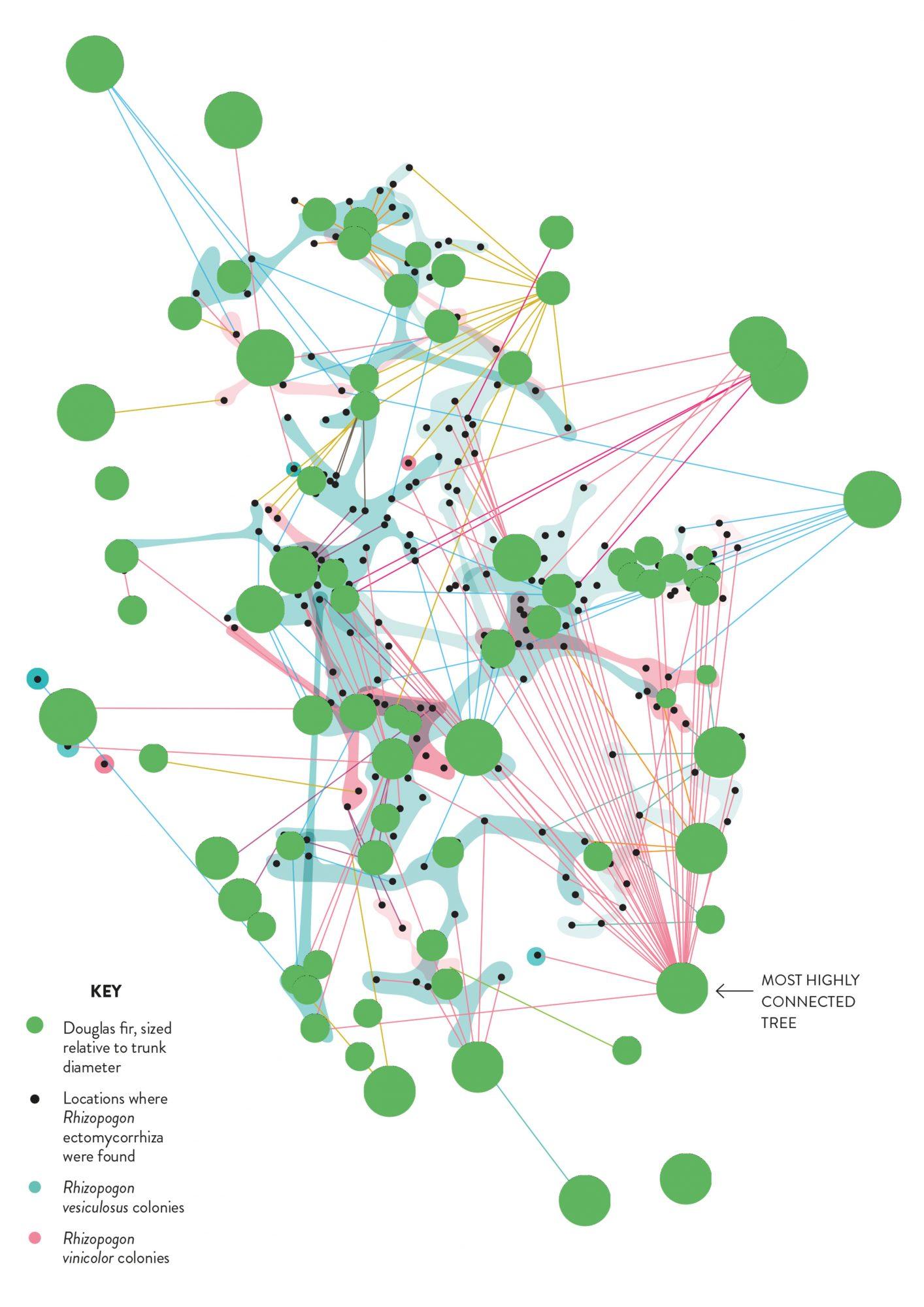
Discover how trees secretly talk to each other using the "wood wide web”
By Fino MenezesOct. 3 2024, Updated 8:00 p.m. ET
TREES SECRETLY COMMUNICATE WITH EACH OTHER IN THE FOREST
Imagine an information superhighway that speeds up interactions between a large, diverse population of individuals, allowing individuals who may be widely separated to communicate and help each other out.
When you walk in the woods, this is all happening beneath your feet. No, we're not talking about the internet, we're talking about fungi. As a result of a growing body of evidence, many biologists have started using the term “wood wide web” to describe the communications services that fungi provide to plants and other organisms.

All trees all over the world form a symbiotic association with below-ground fungi
These are fungi that are beneficial to the plants and explore the soil. The fungi send mycelium, a mass of thin threads, through the soil. The mycelium picks up nutrients and water, brings them back to the plant, and exchanges the nutrients and water for a sugar or other substance made by photosynthesis from the plant.
THIS WIN/WIN IS A MUTUALLY BENEFICIAL EXCHANGE
While researching her doctoral thesis some 20+ years ago, ecologist Suzanne Simard discovered that trees communicate their needs and send each other nutrients via a network of latticed fungi buried in the soil – in other words, she found, they “talk” to each other.
Simard showed how trees use a network of soil fungi to communicate their needs and aid neighbouring plants.
Since then she has pioneered further research into how trees converse, including how these fungal filigrees help trees send warning signals about environmental change, search for kin and how they transfer their nutrients to neighbouring plants before they die.
All trees all over the world form a symbiotic association with below-ground fungi. These are fungi that are beneficial to the plants and explore the soil. The fungi send mycelium, a mass of thin threads, through the soil.
The mycelium picks up nutrients and water, brings them back to the plant, and exchanges the nutrients and water for a sugar or other substance made by photosynthesis from the plant.
It’s this network that connects one tree root system to another tree root system, so that nutrients and water can exchange between them.
The word “mycorrhiza” describes the mutually-beneficial relationships that plants have in which the fungi colonise the roots of plants. The mycorrhizae connect plants that may be widely separated.

CHECK OUT THIS EXAMPLE OF NETWORKING OPPORTUNITIES
Sixty-seven Douglas fir trees of various ages were found to be intricately connected below ground by ectomychorrhiza from the Rhizopogon genus.
Rhizopogon, which means ‘root beard’ in Greek, is commonly found living in a symbiotic relationship with pine and fir trees, and thus is thought to play an important ecological role in coniferous forests. Areas occupied and trees connected by Rhizopogon vesiculosus are shaded blue, or shown with blue lines, while Rhizopogon vinicolor colonies and connections between trees are coloured pink, or shown by pink lines.
The most highly connected tree was linked to 47 other trees through eight colonies of R. vesiculosus and three of R. vinicolor.
How trees secretly talk to each other - BBC News
Trees talk and share resources right under our feet, using a fungal network nicknamed the Wood Wide Web. Some plants use the system to support their offspring, while others hijack it to sabotage their rivals.
THE WOOD WIDE WEB IS EARTH’S NATURAL INTERNET
While mushrooms are the most familiar part of a fungus, most of their bodies are made up of mycelium. These threads act as a kind of underground internet, now referred to as the “wood wide web” linking the roots of different plants and different species.
By linking to the fungal network they can help out their neighbours by sharing nutrients and information or by sabotaging unwelcome plants by spreading toxic chemicals through the network.
Fungal networks also boost their host plants’ immune systems. Simply plugging in to mycelial networks makes plants more resistant to disease.
Trees in forests are not really individuals. Large trees help out small, younger ones using the fungal internet. Without this help, Simard thinks many seedlings wouldn’t survive. She found that seedlings in the shade, which are likely to be short of food, received carbon from other trees.
Learn more about the harmonious yet complicated social lives of trees and prepare to see the natural world with new eyes with Suzanne Simard’s TED Talk, below.
Source: AlbertonRecord.co.za
"A forest is much more than what you see," says ecologist Suzanne Simard. Her 30 years of research in Canadian forests have led to an astounding discovery -- trees talk, often and over vast distances. Learn more about the harmonious yet complicated social lives of trees and prepare to see the natural world with new eyes.
FOUR SOLUTIONS FOR SUSTAINABLE FORESTRY FROM SUZANNE SIMARD
Simard suggests four simple solutions for more holistic and sustainable forestry that could end the damage caused by clear cutting:
As more and more information comes to light about the complex relationships existing between trees, we are better equipped to save our forests and help them thrive. Scientists like Simard are helping us change our perspective so that we work in harmony with nature; something that could dramatically alter the trajectory of environmental disaster and bring harmonious outcomes for both humans and trees.
